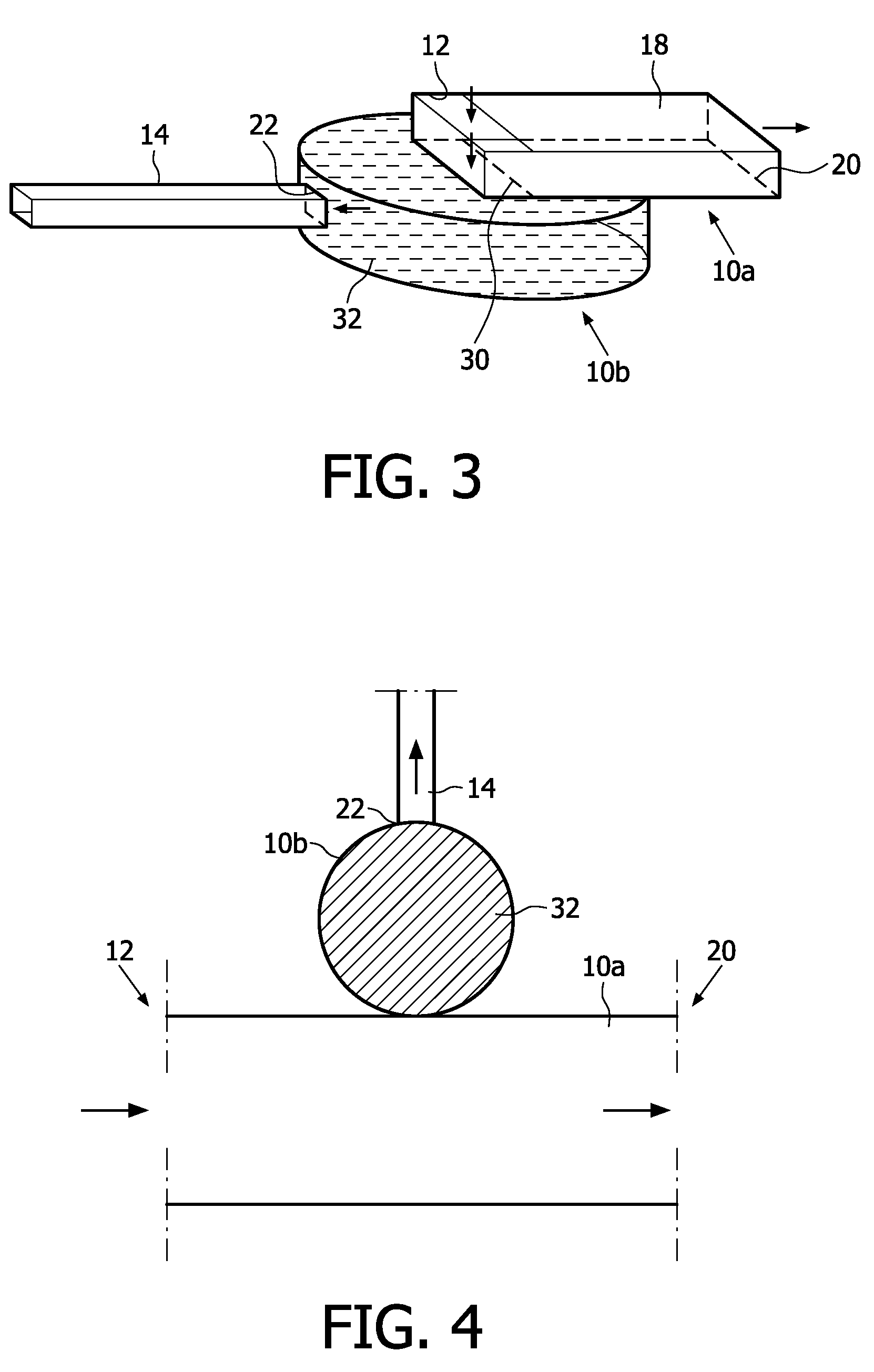Interfacing an inlet to a capillary channel of a microfluidic system
a microfluidic system and capillary channel technology, applied in the field of microfluidic systems, can solve the problems of incompatibility with the scale of the microfluidic analytical device, and achieve the effects of enhancing the wettability of the part, reducing the cross-section, and increasing the hydraulic resistance of the second passag
- Summary
- Abstract
- Description
- Claims
- Application Information
AI Technical Summary
Benefits of technology
Problems solved by technology
Method used
Image
Examples
Embodiment Construction
[0069]In FIG. 1, the geometrical construction of a reservoir 10 interfacing an inlet 12 to a capillary channel 14 of a microfluidic system is illustrated schematically. The reservoir 10 has a rectangular cross-section with sidewalls 16 and top and bottom walls 18. In FIG. 1, the top wall is not shown for illustrative purposes.
[0070]The inlet 12 is arranged in a front wall of the reservoir 10. An outlet 20 is arranged in a back wall of the reservoir 10. For example, the inlet 12 and the outlet 20 have respective cross-sections, which are smaller than the cross-section of the reservoir 10. The inlet 12, for example is connected to a front-end module for sample fluid capture or purification. The sample fluid is received by the reservoir 10 at the inlet 12 and begins to fill the reservoir 10.
[0071]In one sidewall 16, an entrance 22 of the capillary channel 14 is arranged. The inner walls 16, 18 of the reservoir 10, including an area 24 surrounding the entrance 22, have a substantially u...
PUM
| Property | Measurement | Unit |
|---|---|---|
| hydraulic resistance | aaaaa | aaaaa |
| pressure | aaaaa | aaaaa |
| capillary force | aaaaa | aaaaa |
Abstract
Description
Claims
Application Information
 Login to View More
Login to View More - R&D
- Intellectual Property
- Life Sciences
- Materials
- Tech Scout
- Unparalleled Data Quality
- Higher Quality Content
- 60% Fewer Hallucinations
Browse by: Latest US Patents, China's latest patents, Technical Efficacy Thesaurus, Application Domain, Technology Topic, Popular Technical Reports.
© 2025 PatSnap. All rights reserved.Legal|Privacy policy|Modern Slavery Act Transparency Statement|Sitemap|About US| Contact US: help@patsnap.com



